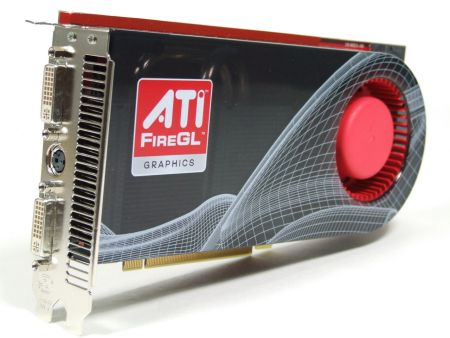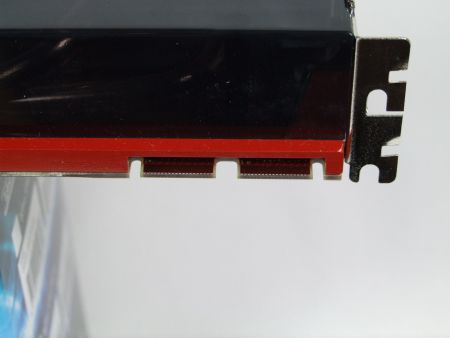Workstation-Shootout: ATi FireGL V7600 vs. Nvidia Quadro FX 4600
ATi FireGL V7600 - Hardware Details
ATi FireGL V7600: Workstation graphics card with 2 DVI connectors, plus 1 for stereoscopic glasses.
ATI sends its workstation lineup into the market with bold claims. According to a press release, the new R600-based product line is meant to offer a 300% performance advantage over previous models. Of course, such claims will net the company the desired attention, but at the same time, they also inspire a certain level of skepticism: our first reaction was that ATI was confusing marketing with hyperbole. Nonetheless, if there is even a kernel of truth to these claims, the new cards must have a lot to offer that would be worth examining more closely.
In this comparison, we are limiting ourselves to the FireGL V7600, which comes with 512 MB of video memory and sells for a recommended price of $1000. ATI positions it in the high-end segment for CAD and DCC applications. Within the workstation family, it has two bigger siblings, namely the V8650 with 2 GB of memory and the V8600 with 1 GB. These two models are a good deal more expensive, and can only unleash their full potential in applications using massive textures and huge models or scenes. On the lower end, there are also two pared down versions: these are the V5600 with 512 MB of video RAM, and the V3600 with a meager 256 MB.
We are happy to report that all of ATI's cards finally sport two dual-link capable DVI video outputs, enabling the use of large wide-screen monitors. Each display can now have a maximum of 2560x1600 pixels, for a grand total of 5020 pixels across.
In its whitepapers, ATI deliberately avoids the use of the term "CrossFire", which hails from the mainstream segment. Instead, the company soberly speaks of "multiple card support". In plain English, the principle is the same, allowing two to four cards to be used in parallel to increase the processing performance. Nvidia calls its implementation of this technique "SLI".
Compared to the previous generation, the GPU architecture has fundamentally changed. For instance, with the new generation, separate pixel and vertex shaders are a thing of the past, and have been replaced by so-called "unified shaders". The advantage of this approach is that shader resources can be dynamically allocated depending on the application's current needs. If the task has a lot of geometry computations, the vertex shader capacity is increased, while the pixel shader power is upped for rendering tasks. This process is fully automatic.
One feature is especially interesting for medical applications such as X-rays / radiology. The display engine is able to handle 10 bits per color component (R, G and B), or well over one billion colors. The same goes for the black/white channel (think X-ray images), which supports up to 210 = 1024 shades of grey, rather than the standard 256.
Get Tom's Hardware's best news and in-depth reviews, straight to your inbox.
8-pin Molex connector for auxiliary power on the FireGL V7600
V7600 Crossfire connector for use with two cards running in tandem.
Current page: ATi FireGL V7600 - Hardware Details
Prev Page OpenGL Workstation Graphics - Market, Audience And Features Next Page ATi FireGL V7600 - Software And Driver Details-
tipoo Is there any reason why these applications couldnt run on a Geforce or Radeon card? Why spring over 1000 bucks for cards with seemingly tame specs?Reply



